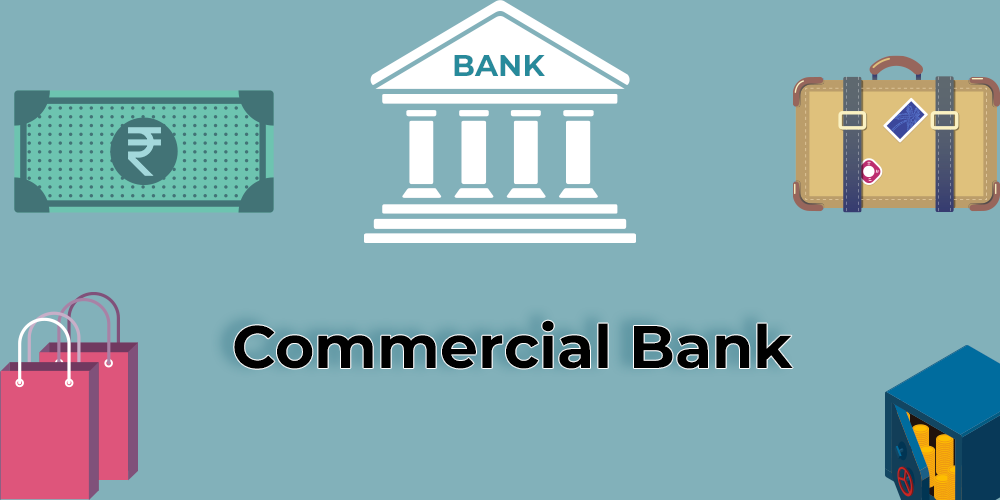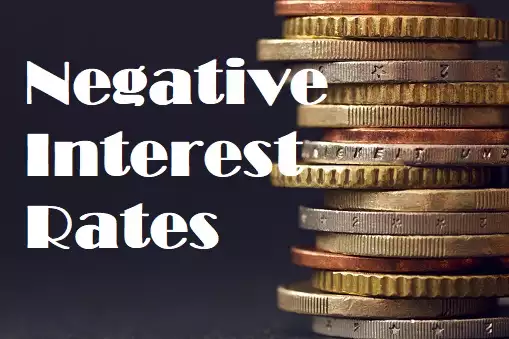What Is a Negative Interest Rate?
Jul 30, 2023 By Kelly Walker
Negative interest rates? What does this even mean, and how could it be a thing?! It might seem absurd, but negative interest rates have become increasingly popular as a monetary policy tool in many countries over the past few years.
While not widely discussed or well understood among the public, negative interest rates are incredibly important for anyone interested in economics.
In this blog post, we'll dive deeper into negative interest rates: what they are, why central banks use them (and with what results), and how they affect individuals inside and outside banking institutions.
Understanding Negative Interest Rate
Negative interest rates are when central banks set the target rate for bank deposits below zero. Any money deposited in an account will be subject to a fee rather than earning any return. Since 2015, several central banks have implemented negative interest rate policies (NIRP) to stimulate economic activity during weak growth or deflationary pressures.
At its core, NIRP is a form of monetary policy central banks use to influence spending and borrowing decisions. Setting the deposit rate at a negative level encourages people and businesses to take on more debt to finance investments that stimulate the economy. It also pushes individuals away from savings and towards spending their money, as they are charged for leaving it in the bank.
How Negative Interest Rates Work
In practice, negative interest rates work by decreasing borrowing costs for banks. Banks can borrow from the central bank at a lower rate than they would have to pay if the deposit rate was positive. This makes it more profitable for them to lend money to customers instead of keeping it in their reserves.
The main effect of NIRP is that it decreases the cost of credit and encourages businesses and investors to take on more debt to finance projects or investments that could stimulate economic growth. In addition, when banks are charged a fee for holding excess deposits, they tend to pass this fee onto customers via higher loan rates, meaning that those seeking credit may end up paying more in fees despite the lowered borrowing cost for banks.
Negative interest rates also affect the currency exchange rate, making a country's domestic currency less attractive than foreign currencies. This can increase exports as goods, and services become cheaper for customers abroad.
Commercial Banks
Negative interest rates can have a significant effect on commercial banks. When the central bank sets its deposit rate below zero, it forces banks to pay for the privilege of leaving their excess reserves in the bank rather than earning any revenue from them.
This means that they will need to look for alternative sources of revenue, such as charging higher fees and increasing loan rates to customers. In addition, negative interest rates encourage banks to reduce costs by cutting back on personnel or other overhead expenses.
The increased cost of borrowing is offset somewhat by increased demand for loans from businesses and investors seeking to take advantage of lower borrowing costs. However, this only goes so far, and if more than credit growth is needed to offset the cost of negative interest rates, commercial banks can be put under significant financial strain.
Consequences of Negative Rates
The consequences of negative interest rates are significant and can have a wide-ranging impact on the economy.
Firstly, negative interest rates put pressure on banks to reduce costs which could lead to job losses in banking or financial sectors. Customers will also likely be charged higher fees for services such as overdrafts or loan repayments. This could make it more difficult for those who need credit to access it, particularly if they already have a poor credit rating.
Secondly, negative rates can lower bond yields, reducing the returns available to investors and making them less willing to take on riskier investments. This could lead to disinvestment in certain sectors and therefore dampen economic growth.
Thirdly, negative interest rates can also weaken the domestic currency. If the cost of borrowing is lower in another country than domestically, investors may be more likely to move their investments there. This could lead to an outflow of capital from the country and a decline in the value of its currency.
Finally, if NIRP policies are sustained too long, they can become counter-productive. Banks may start to hoard cash instead of lending as they know that all of their reserves will eventually be subject to a fee regardless. In addition, people might stop spending money as they realize that savings account no longer offer any financial benefit.
Examples of Negative Interest Rates
1. European Central Bank (ECB)
The ECB has had negative interest rates since June 2014, with the deposit rate currently at a record low of -0.5%.
2. Bank of Japan
The Bank of Japan (BOJ) introduced NIRP in January 2016 and maintained it until March 2020, when it moved to a "yield curve control" policy, which is a type of NIRP.
3. Swiss National Bank
The SNB adopted negative rates in December 2014 and kept them until early 2020, when it raised its target rate from -0.75% to -0.25%.
4. Sweden
The country was one of the first to adopt NIRP, introducing it in July 2009. Its deposit rate is currently -0.50%.
5. Denmark
Denmark adopted negative rates in 2012 and has kept them since, with its current deposit rate at -0.75%.
6. Hungary
Hungary introduced negative interest rates in March 2016 and has maintained them since then, with the current deposit rate at -0.90%.
7. Norway
The country adopted NIRP in March 2020 and maintains a deposit rate of -0.50%.
Benefits of a Negative Interest Rate
- Encourages borrowing, which can lead to economic investment and growth.
- Incentivizes banks to lend money rather than keep it in reserves, which can help increase credit availability.
- Reduces borrowing costs for businesses and investors seeking to finance projects or investments that could stimulate economic growth.
- Forces banks to reduce costs, resulting in improved efficiency.
- Decreases bond yields, meaning better investment returns with less risk investors take.
- Makes domestic currency less attractive than foreign currencies, increasing exports as goods and services become cheaper for customers abroad.
- Stimulates consumer spending as people are charged for leaving their money in the bank, encouraging them to use it instead of saving it away at no benefit to them.
- Encourages banks to focus on improving the quality of their services instead of relying solely on interest rates and fees for revenue.
- Adopting sensibly can boost an economy suffering from a recession or deflationary spiral.
FAQs
Q: Why Would Central Banks Use Negative Interest Rates?
A: Central banks use negative rates to stimulate economic growth. Setting the benchmark interest rate below zero encourages businesses and consumers to spend more money instead of saving it. It becomes cheaper for companies and individuals to borrow money, leading them to make bigger investments and purchases. This ultimately helps the economy by boosting demand and creating jobs in certain sectors.
Q: How Do Negative Interest Rates Affect Individuals?
A: Negative interest rates can directly impact individuals by affecting the cost of goods and services. Banks may pass on their extra costs to consumers, resulting in higher prices for necessities such as food or housing. Additionally, low-interest rates mean lower returns from saving accounts, so keeping your money in a bank won't be a productive option for growing wealth.
Q: What Are the Risks of Negative Interest Rates?
A: One potential risk is that low borrowing costs can lead to excessive debt accumulation, resulting in economic instability. Also, banks might decide to pass on their extra costs to customers, leading to higher prices for goods and services. Lastly, very low or negative interest rates can deflate the economy, meaning there needs to be more money circulating in the system. This could ultimately lead to weaker growth and productivity.
Conclusion
Negative interest rates are a powerful tool for central banks to stimulate economic growth. While there are risks associated with this policy, such as increased debt accumulation and deflationary effects, the benefits could outweigh these if it's handled sensibly. With many countries now introducing negative interest rates as part of their monetary policies, individuals and businesses need to be aware of how this might affect them in the short-term and long term.








